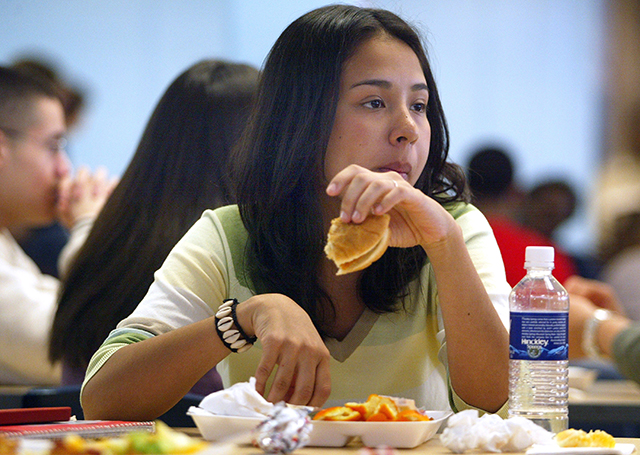How Taxpayers Will Be Hurt by New School Lunch Standards
Scott Blakeman /
The United States Department of Agriculture (USDA) is planning to award $25 million in government grants (i.e. your money) to help schools. This money will be used to purchase kitchen equipment that meets the USDA’s breakfast and lunch standards as defined by the Healthy, Hunger-Free Kids Act of 2010.
According to a recent Government Accountability Office (GAO) report, some schools couldn’t comply with the standards because many didn’t have storage space or infrastructure to store the increased amount of fresh fruits and vegetables mandated by the law. A study by the Kids’ Safe and Healthful Foods Project found that 88 percent of schools need at least one additional piece of kitchen equipment, and 55 percent need infrastructure upgrades to “serve healthier meals that meet science-based nutrition standards.” Nutrition is important, but it should be handled by local schools that are more acquainted with students’ dietary needs—not the federal government.
This is government micromanagement at its worst. The federal government is intervening in school meals on a mass scale, demonstrating little to no faith in school food authorities (SFAs). And the rules are absurd: For example, the standards don’t merely require vegetables generally; instead, they require that there be “dark green” vegetables, “red/orange” vegetables, “beans/peas,” and other selections that virtually ensure that any vegetable known to man is made available.
The GAO has reported that the rules and regulations are making things more burdensome. In its report, GAO collected information directly from eight SFAs and found that the new lunch requirements created food storage and kitchen equipment challenges for some SFAs. In addition, “[s]chool food service staff in all eight districts noted that workload increased primarily because of the need to prepare more fruits and vegetables each day to meet requirements.”
Moreover:
Some of the SFAs we visited also suggested that these areas will likely be ongoing challenges. To try to remedy storage challenges, one SFA we visited had developed plans to expand coolers and freezers on-site in schools, which was not an option in another SFA we visited due to facility and resource constraints. A third SFA’s plans to remodel the kitchen and serving lines in its largest school were put on hold because of the negative financial impact the SFA experienced in part because of the new lunch requirements.
Instead of fixing the underlying problems by reducing or eliminating the overly burdensome and costly standards, the USDA wants to spend more taxpayer money to try and put a bandage on the problems that it has created. $25 million is likely only the beginning.
The USDA is providing virtually no flexibility to SFAs and the local experts, the ones who best know the needs of their students. Rather, it is insisting that bureaucrats in Washington know what is best for all involved. Students and schools will be better off through meal programs that meet their unique needs, not one-size-fits all mandates that lead to waste and unhappy students.

